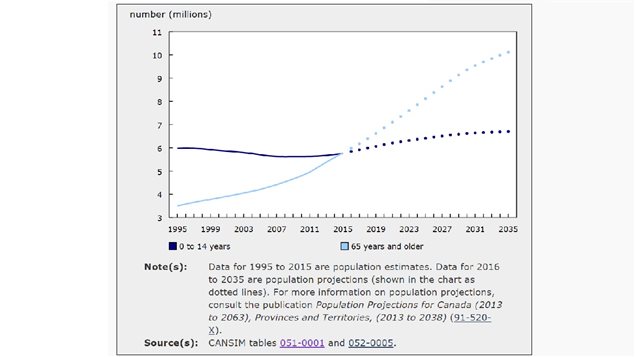It seems Canada is growing faster than other G7 countries, but not as fast as it has been in the past.
The Canadian statistical information agency, Statistics Canada has just released its latest population estimates.
It indicates that as of July 1, 2015, Canada’s population was estimated at 35, 851,800. That’s an increase of 308,100 over 2013-2014 or a 0.9 percent increase from the previous period.

This is the lowest level of growth in Canada since 1998-99, but was still greater than roughly equivalent growth in 2014-15 in France +0.2, the UK +0.2, the US +0.7, Germany +0.1, or Italy and Japan where the population level was stable.
In the period July1 2014 to June 30, 2015, Canada took in 239,800 immigrants, compared to 267,900 during the previous period.
For the first time however the number of people over age 65, exceeded the number of children age 0-14, showing that Canada’s population is ageing and that difference will likely increase in coming years.

The statistics show that the number of people reaching age 100 continues to increase. In 2011 there were 5,268 people over age 100 while in 2015 there were just over 8,000 people aged 100 or more. However of that number only 934 were men. Indeed the figures show that from age 65 where the numbers of men and women are roughly equal, from age 70 onwards the percentage of men declines noticeably.
The two central provinces of Ontario and Quebec remain by far the most populous with almost 14 million in Ontario, and just over 8 million in Quebec. The province of Newfoundland and Labrador lost population in this period, as did the province of New Brunswick.







For reasons beyond our control, and for an undetermined period of time, our comment section is now closed. However, our social networks remain open to your contributions.